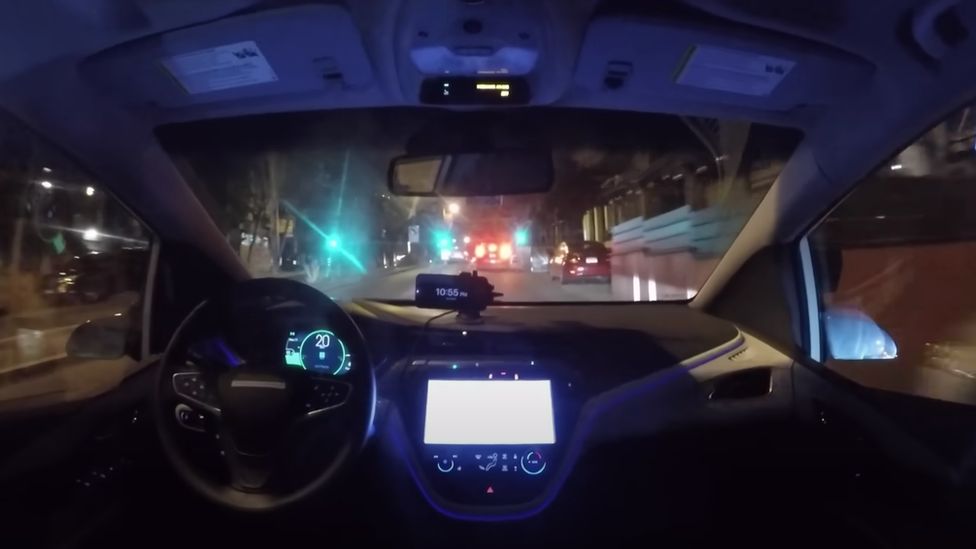Cruise driverless cars suspended after accident

California has suspended Cruise driverless taxis from San Francisco streets after a pedestrian was dragged under its wheels after an accident.
The state’s Department of Motor Vehicles (DMV) cited safety concerns, claiming the company had misrepresented what had happened after the incident.
The company is one of two firms that has been allowed to provide taxi trips with driverless cars in the city.
Cruise said in a statement it would be “pausing operations in the city”.
Driverless taxis, sometimes referred to as autonomous vehicles (AVs), are a common sight in San Francisco, to the amazement of many tourists.
As the name suggests, there is no driver. A customer can hail a cab with an app and then unlock the door with their phone.
Critics, though, say the vehicles’ safety has not been established and question allowing them to roam city streets.
On 2 October, a pedestrian was struck and then propelled into the path of a Cruise car.
According to Cruise, the car “detected a collision” and stopped. It then “attempted to pull over to avoid causing further road safety issues, pulling the individual forward approximately 20 feet”.

However the DMV has given further information.
“During the course of performing the hard-braking manoeuvre, the AV collided with and ran over the pedestrian”, the agency said.
“After coming to a complete stop, the AV vehicle subsequently attempted to perform a pullover manoeuvre while the pedestrian was underneath the vehicle.”
The DMV then accuses Cruise of misrepresenting what happened.
On 3 October the agency said it met with Cruise to analyse the incident.
“The video footage presented to the department ended with the AV’s initial stop following the hard-braking manoeuvre. Footage of the subsequent movement of the AV to perform a pullover manoeuvre was not shown to the department” the DMV says.
Cruise said this scenario had not been encountered before and was due to a confluence of factors.
However, the DMV said that the incident “indicates that Cruise’s vehicles may lack the ability to respond in a safe and appropriate manner during incidents involving a pedestrian”.
The agency confirmed to the BBC that the suspension does not apply to Waymo, the second firm that provides paid-for driverless taxis in San Francisco.
“We have stayed in close contact with regulators to answer their questions and assisted the police with identifying the vehicle of the hit and run driver,” Cruise said in a statement.
The move by the DMV is a huge setback for Cruise, which appeared to have established itself in San Francisco just a few months ago.
Cruise wants to expand into other cities, like Phoenix in Arizona. But San Francisco is widely seen as a test case for the company.
In August, the city voted to allow the company to provide 24-hour taxis for paid-for trips – a massive moment for Cruise.
Shortly after that a Cruise car was involved in a crash with a fire engine and the company was asked to halve its fleet of cars on the streets.
Representatives of emergency services in San Francisco have criticized the company’s cars for blocking roads, as well.
Both Waymo and Cruise have consistently argued that their cars are safer than human drivers.
However they can also do things that feel strange – or odd or jerky.
The BBC has used Cruise AVs several times on San Francisco streets, including one occasion when the car couldn’t make a right turn and blocked traffic until it was manually steered.
Some San Franciscans love these cars. No driver means no drunk driving, or speeding, or refusing to pick up a passenger due to disability.
Others wonder why it’s San Francisco that is being used to try untested vehicles.
Over the summer, an activist group began a movement to put street cones on their bonnets, which deactivates the cars.
